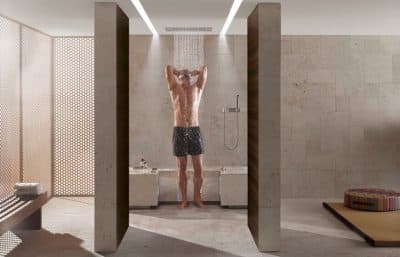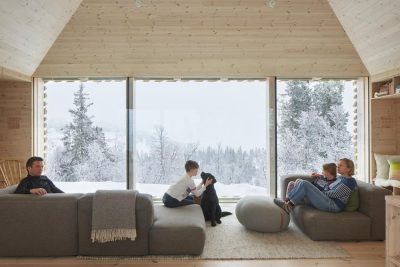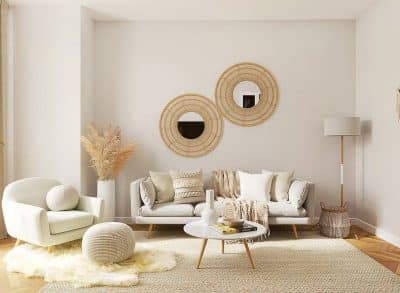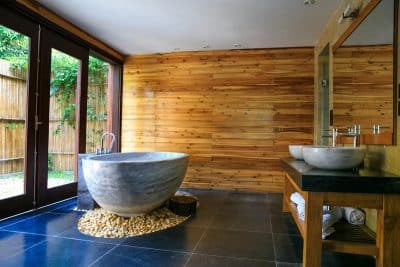
Once relegated to functional necessity, the coffee table is no longer merely a surface for cups and magazines, becoming a canvas for creativity and a focal point throughout contemporary spaces. Throughout this change over time, black coffee tables have materialized as a compelling category, offering practicality and allure. Black with its depth, operates as an ideal platform for sculptural design, exceeding practical purposes, and becoming works of art commanding attention, drawing the eye, and inviting conversation.
From minimalist shapes to organic forms inspired by nature, sculptural black coffee tables come in an array of styles. Whether sleek metal, warm wood, or innovative mixed materials, each piece possesses character, injecting a sense of dynamism, surpassing mere décor. Here, we’ll delve into the aspects of functional art, presenting the diversity in materials, shapes, and styles that define these pieces, and showcasing their ability to reshape spaces into galleries of personal expression.
The Rise of Functional Art
As times evolve, the boundaries between art and furniture have become increasingly blurred. A more recent philosophy champions the fusion of aesthetics and utility, giving rise to “functional art” – pieces serving a practical purpose while filling their surroundings with intrigue.
This paradigm shift has fueled a growing demand for furniture doubling as art, items that surpass sheer functionality to become conversation starters and a display of character. Black coffee tables, with their drama-filled elegance, stand as a prime example of this trend.
Their subdued hue provides a backdrop for a multitude of artistic avenues, from geometric lines to intricate organic patterns and inlay work. The drama of black adds a sophisticated twist, forming contrast against lighter elements or integrating into a monochromatic scheme.
Through sculptural design, black tables break free from the constraints of convention. They invite contemplation, with each curve, angle, and texture telling a story, reshaping a simple piece into a compelling focal point.
Black Coffee Tables as Sculptural Masterpieces
The shift of tables into sculptural pieces is made possible by the palette of available material, each lending its own distinctive qualities to what begin as functional pieces.
Metal: From stainless steel to warm, patinated copper, metal offers a sleek and modern aesthetic. Sculpted into bizarre geometric forms, flowing curves, or intricate latticework, metal tables can exude industrial chic for a rustic look or lean toward a contemporary feel in a more formal setup. This can range from interlocking metal rings, reminiscent of a modern sculpture, to tops trimmed with hammered metal for a textured finish.
Wood: Wood brings an organic aura to sculptural designs. Whether carved into smooth, minimalist forms or showcasing the natural grain and knots of the timber, wood can produce a feel of rusticity or take a modern approach for those with a more refined desire. An example here could be a single slab of ebony, polished to a high gloss, or a design featuring meshing pieces of reclaimed wood to achieve an unfinished aesthetic.
Glass: Translucent or opaque, glass adds an ethereal twist. It can be molded into curves, sharp angles, or even whimsical shapes while giving the option for clear, tinted, or frosted finishes to determine the level of airiness. A black glass tabletop, for instance, supported by a twisted metal base, creates a piece appearing to defy gravity.
Mixed Materials: The most adventurous approach is to combine mixed materials to build unique pieces. This could be a table with a polished concrete base, topped with a slab of blackened wood, or a design featuring a mosaic of different stones, metals, and glass, sparking curiosity.
Different Styles and Aesthetics
The sculptural space covers a broad spectrum of styles, each catering to diversity while pushing the boundaries of design. Here are just a few examples to give you an idea:
For the minimalist at heart, clean lines and geometric forms reign supreme. Here you could opt for a rectangular table with a base of linking metal cubes, or a circular top backed by a single, sculptural pedestal base. By taking this style of approach you showcase the aspects of sculptural design while maintaining a sense of calm and order
Industrial enthusiasts gravitate towards raw materials and bold forms. A table made of reclaimed wood with exposed bolts and a steel frame promotes the charm of a loft or factory space. Alternatively, a piece fashioned from distressed metal with rivets and welds adds a hint of ruggedness to a minimalist industrial setting.
Eclectic spirits revel in the unexpected and the unconventional. A table sculpted into a whimsical animal figurine brings a playful element to a space filled with eclectic accents, while options with asymmetrical forms, unexpected materials, or a mix of textures further enrich the idea of curated chaos defining eclectic design.
Bohemian souls embrace organic shapes and natural materials. A table sculpted from a single piece of wood with flowing lines and a live edge provides earthy authenticity, while options adorned with woven details, macramé accents, or hand-painted patterns yield a boho vibe in a space filled with plants, textiles, and global-inspired décor.
Practical Considerations
While the artistic appeal of sculptural tables is undeniable, practicality must not be overlooked. Striking a balance between aesthetics and functionality is key to choosing a piece that resonates with your space.
Size and Shape
Before falling head over heels for a breathtaking design, consider the dimensions and room layout. A colossal, sculptural table will likely overwhelm a cozy space, while a petite piece runs this risk of feeling lost in a large, open-concept living room. Measure the area where the table will reside and visualize how different shapes will fit within the existing arrangement.
For smaller rooms, a round or oval table evokes a feeling of flow, while a rectangular or square alternative might be a better fit for larger spaces. Also, consider the height of surrounding seating to ensure the table sits at a comfortable level for drinks and reaching items.
Functionality
Think about how you intend to use the table; if it will primarily serve as a decorative piece, then prioritize aesthetics. However, if you plan to use it for everyday activities like reading, working, or entertaining, ensure it offers a stable surface and ample space for the required needs. Some sculptural designs incorporate additional features like drawers, shelves, or hidden compartments, offering functionality for those who struggle to compromise between function and visual appeal.
Material and Maintenance
Material can significantly impact the longevity and maintenance requirements of your table. Metal tables are generally durable and easy to clean, but might show fingerprints or scratches. Wood requires regular polishing and can be susceptible to moisture damage. Glass is elegant but prone to smudges and breakage, while mixed material pieces may require specific care instructions depending on the materials used.
Before making a purchase, research the properties of different materials and pick one that aligns with your lifestyle and cleaning preferences.
Final Thoughts
With furniture continuously evolving into sculptural statements, black coffee tables have become pieces between the intersection of art and function. Whether you lean towards sleek modernism, industrial chic, eclectic charm, or bohemian spirit they display the diversity possible within the scope of sculptural design. Whether metal, wood, glass or a mixture of materials, each piece tells a story.
By considering size, shape, function, and material, you can opt for a piece serving the practical aspects while simultaneously becoming a focal point. Welcome the opportunity to express creativity and explore the sculptural furniture space. Let your coffee table be more than just a surface—a conversation starter, a statement piece, a testament to the power of design.








